19th July 2025
Queenborough Community Procession – Noon
It is 200 years since the first passenger rail service. All over the country there are going to be celebrations. We will be celebrating in Queenborough in connection with Queenborough Station’s 165th Birthday with a community procession at 12noon on the 19th July. Come and join us!
We are planning a celebratory procession from Queenborough Station to Queenborough Green, and forming a huge “200” to mark Rail 200.
Creating your 1825 Train Carriage
To create your train carriage, you can pick up a free A3 card template from Sittingbourne Station, Queenborough Station or Sheerness Station. They are available from the ticket offices.
Or you can print your own (here is the pdf) or create your own outline on card!
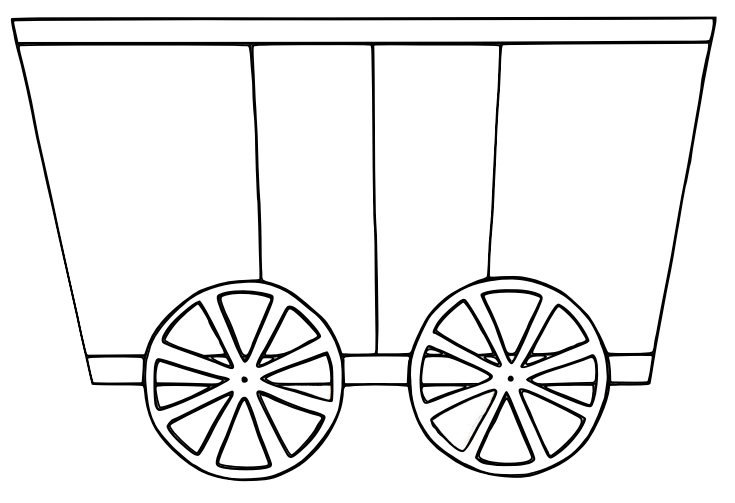
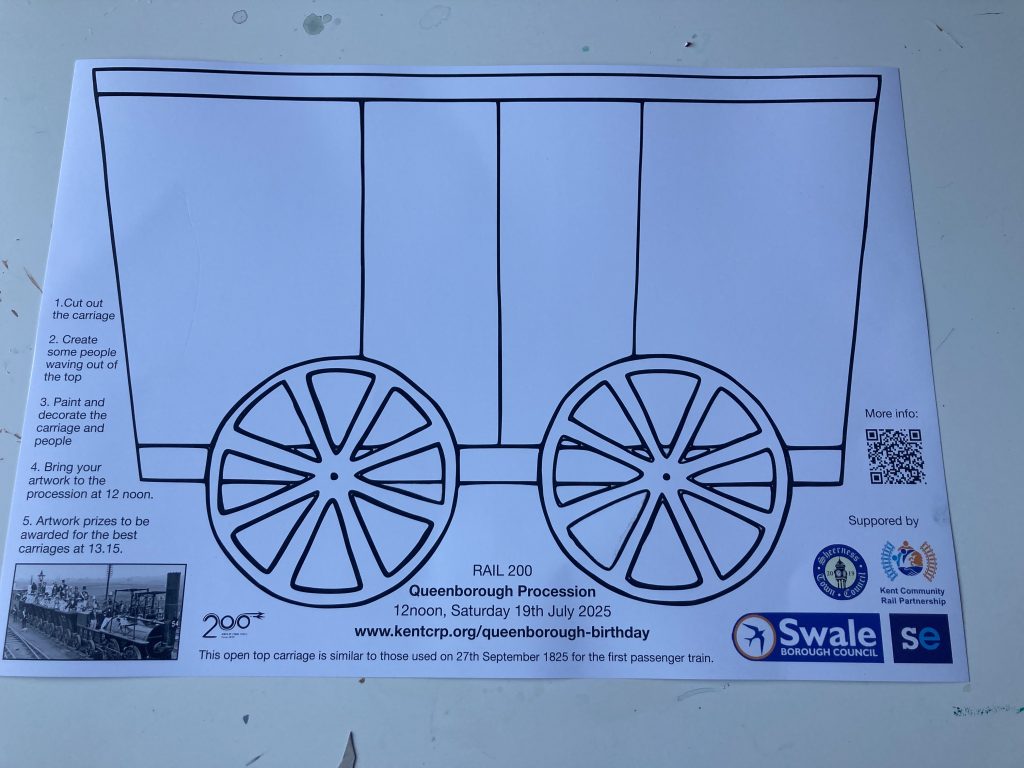
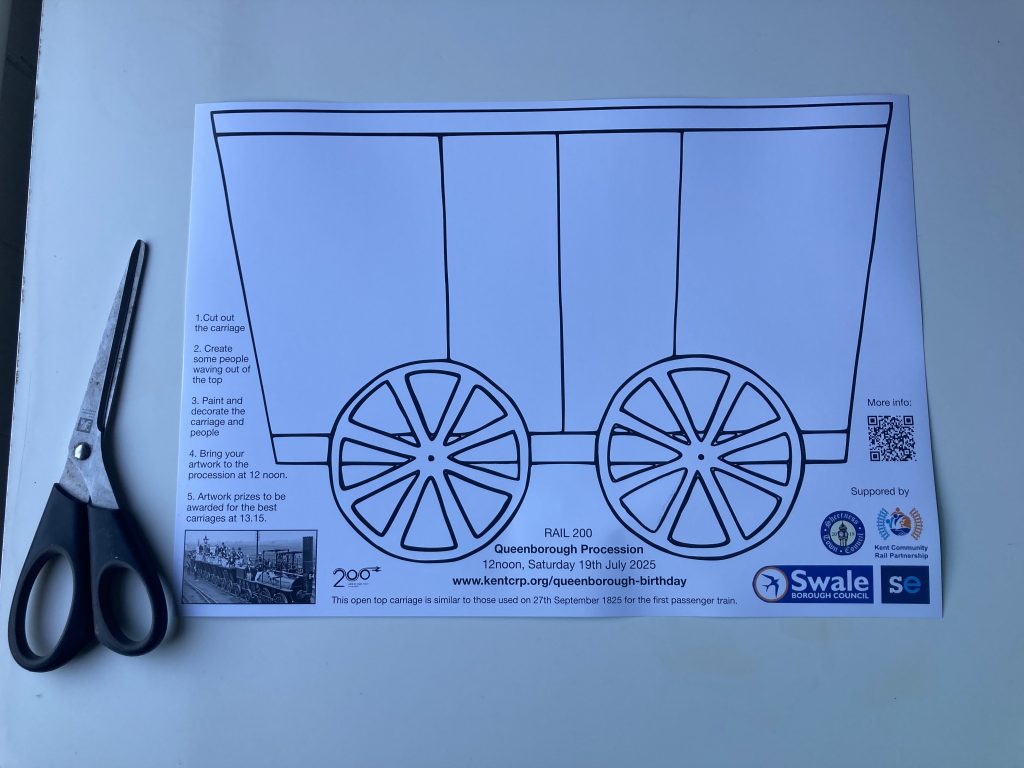
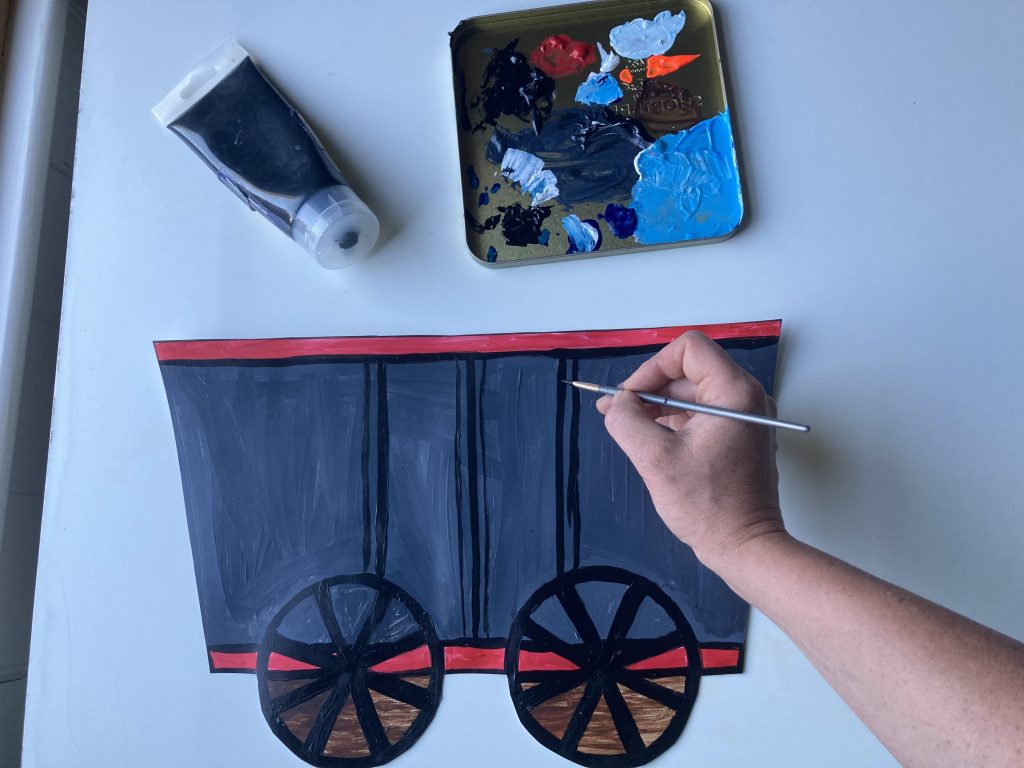

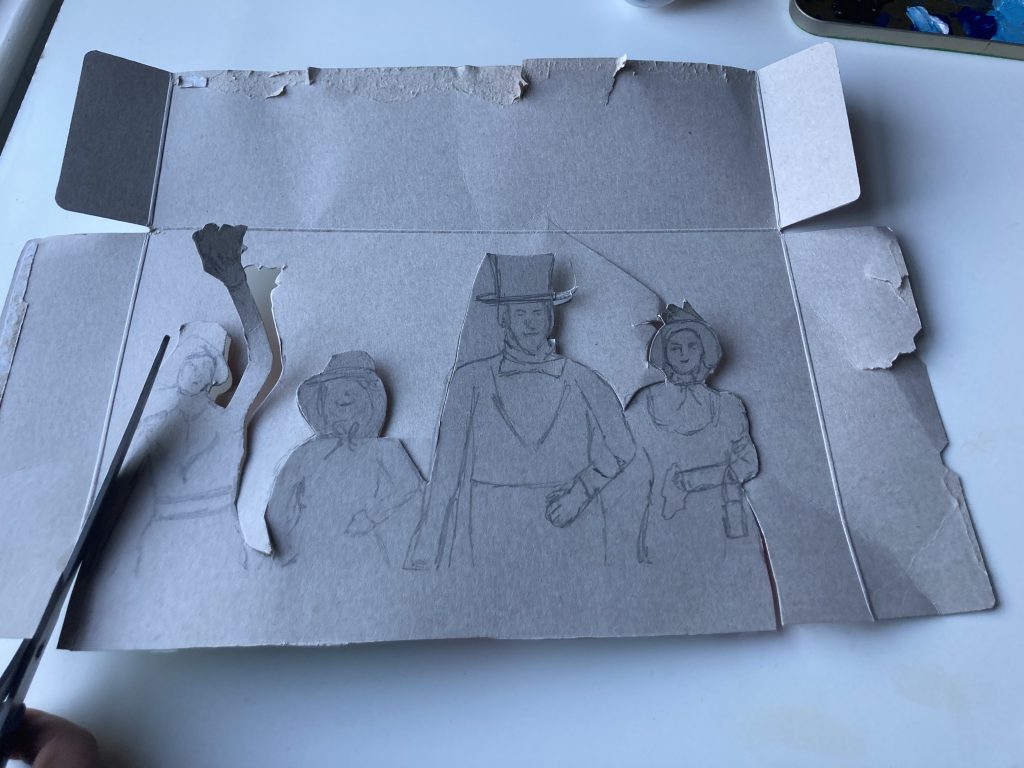
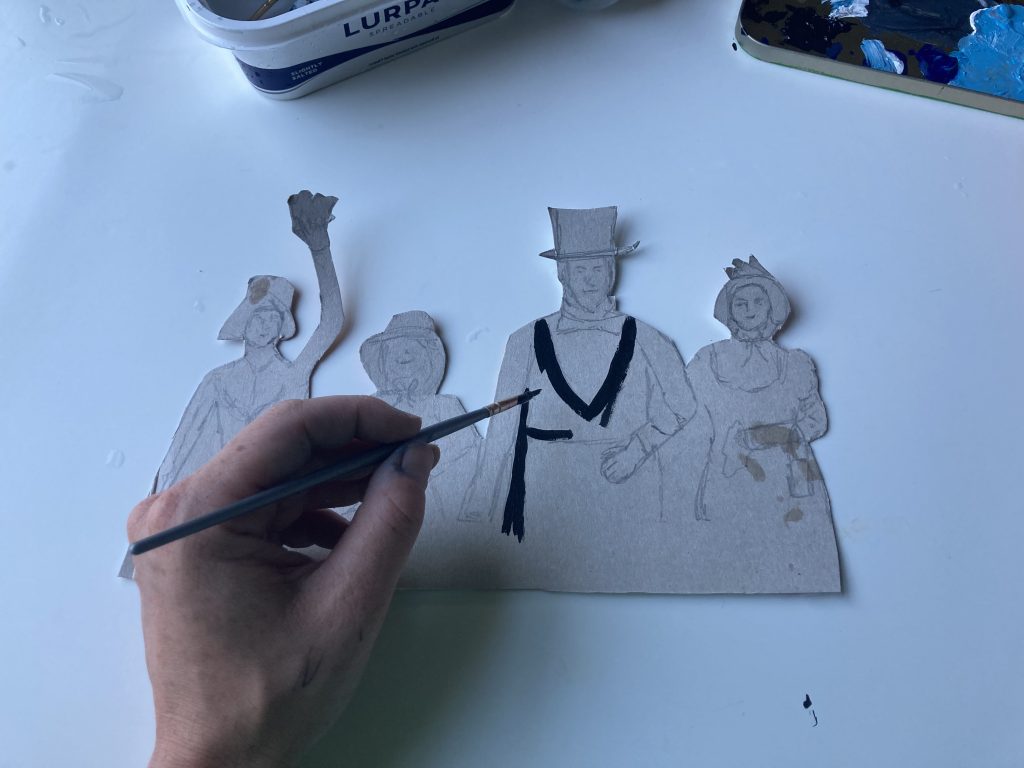

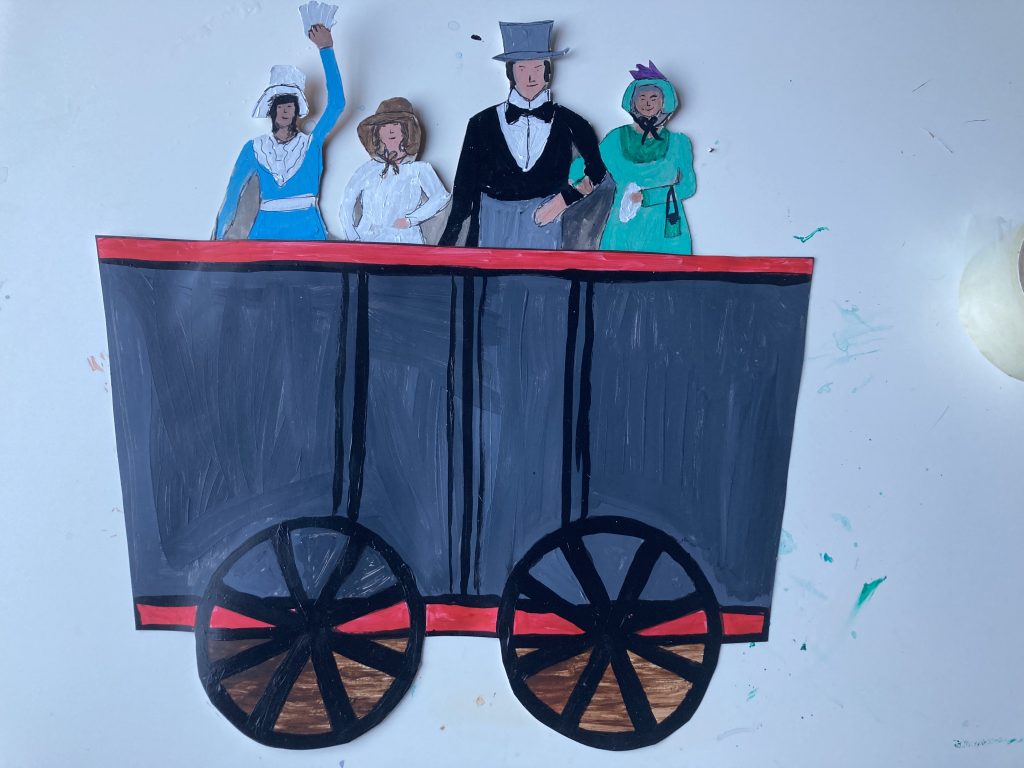
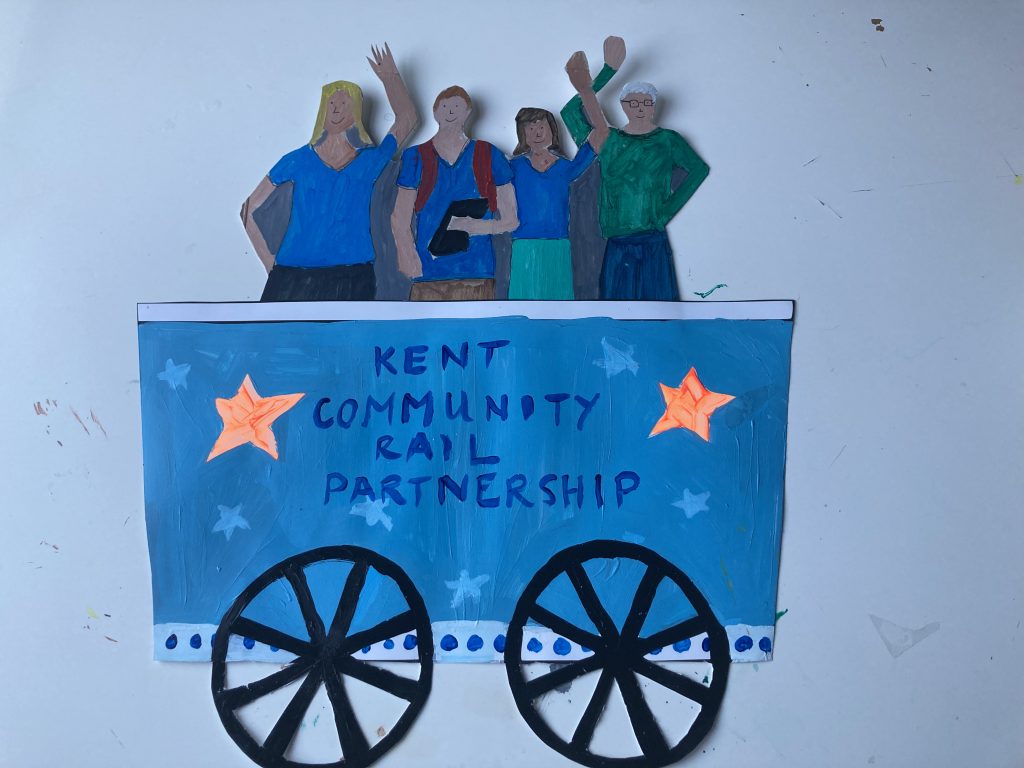
History on the first rail passenger journey – 1825
The story starts in the county of Durham in Northern England. In the valleys of the River Tees and Wear, there was coal, slate, iron ore and lead. These are all very heavy material but worth a lot of money. There was a problem in getting these materials to the market to be sold. The hills were high and the sea was far away. Before trains were invented coal and other heavy goods were put into wagons that ran along rails. Some engineers were experimenting with using steam power to pull the wagons. A man called George Stephenson was one of these engineers.
There were problems getting the engines to run up hill. George Stephenson designed a winding mechanism which was run by steam. The train was attached to a rope and wound up the slope on one side and let down the slow on the other. The water and the coal had to be carried to make the engine go. The water to make the steam was poured into the cylinder tank, with the coal to heat the water carried behind. Once trains could be used to carry coal, people also wanted to use the train to travel on. On the 27th September 1825, a special holiday in Darlington was declared for the official launch of “Locomotion Number One”.
People and newspaper reporters travelled from all over the region. George Stephenson drove the engine and his brothers James and Ralph were the firemen, keeping the boiler hot to make the steam. Helping him was an engineer, Timothy Hackworth. To make the train safe, there were brakemen between the carriages in order to slow and stop the train. The train carried twelve wagons of coal and one with sacks of flour.
The more adventurous arrived at Shildon early in the morning. The wagons became so overloaded with people that the very case of overcrowding on the railway occurred. At Darlington the coal wagons were taken off. This was for the people of Darlington to enjoy. The engine was refuelled and the water topped up.
Mr Meynell’s Brass band embarked on two wagons. From then on the journey was accompanied by music. Between Darlington and Stockton one of the brakemen fell of the train and the carriage ran over his foot. All along the route horses and riders would try to keep up with the train. The train arrived at Stockton Quayside with 600 passengers clinging to the carriages, and there was 21-gun salute. There was a brass band parade into the town and a banquet in Stockton Town Hall. One hundred and two official guests sat down to eat. There was much toasting to celebrate the occasion. By the time of the last toast George Stephenson was so tired that he had left and gone home to sleep.
There are also additional resources available at:
Education materials – Railway 200
![]()